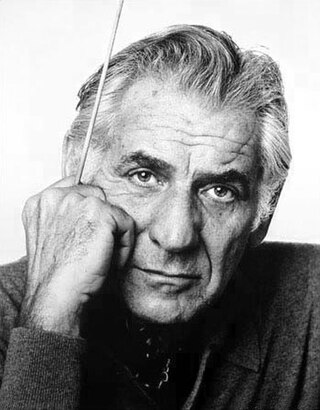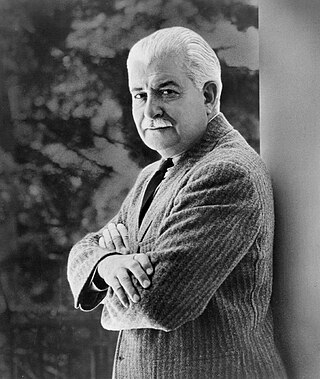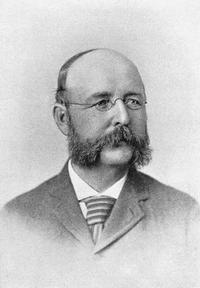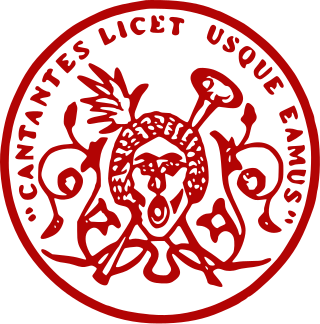
Leonard Bernstein was an American conductor, composer, pianist, music educator, author, and humanitarian. Considered to be one of the most important conductors of his time, he was the first American-born conductor to receive international acclaim. Bernstein was "one of the most prodigiously talented and successful musicians in American history" according to music critic Donal Henahan. Bernstein's honors and accolades include seven Emmy Awards, two Tony Awards, and 16 Grammy Awards as well as an Academy Award nomination. He received the Kennedy Center Honor in 1981.

Symphony Hall is a concert hall that is home to the Boston Symphony Orchestra, located at 301 Massachusetts Avenue in Boston, Massachusetts. BSO founder Henry Lee Higginson commissioned architectural firm McKim, Mead and White to create a new, permanent home for the orchestra. Symphony Hall can accommodate an audience of 2,625. The hall was designated a U.S. National Historic Landmark in 1999 and is a pending Boston Landmark. It was then noted that "Symphony Hall remains, acoustically, among the top three concert halls in the world, and is considered the finest in the United States." Symphony Hall, located one block from Berklee College of Music to the north and one block from the New England Conservatory to the south, also serves as home to the Boston Pops as well as the site of many concerts of the Handel and Haydn Society.

Arthur Fiedler was an American conductor known for his association with both the Boston Symphony and Boston Pops orchestras. With a combination of musicianship and showmanship, he made the Boston Pops one of the best-known orchestras in the United States. Fiedler was sometimes criticized for over-popularizing music, particularly when adapting popular songs or editing portions of the classical repertoire, but he kept performances informal and sometimes self-mocking to attract a bigger audience.

The New England Conservatory of Music (NEC) is a private music school in Boston, Massachusetts. The conservatory is located on Huntington Avenue along the Avenue of the Arts near Boston Symphony Hall, and is home to approximately 750 students pursuing undergraduate and graduate studies, and 1,500 more in its Preparatory School and School of Continuing Education. NEC offers bachelor's degrees in instrumental and vocal classical music performance, contemporary musical arts, composition, jazz studies, music history, and music theory, as well as graduate degrees in collaborative piano, conducting, and musicology. The conservatory has also partnered with Harvard University and Tufts University to create joint double-degree, five-year programs.

George Whitefield Chadwick was an American composer. Along with John Knowles Paine, Horatio Parker, Amy Beach, Arthur Foote, and Edward MacDowell, he was a representative composer of what is called the Second New England School of American composers of the late 19th century—the generation before Charles Ives. Chadwick's works are influenced by the Realist movement in the arts, characterized by a down-to-earth depiction of people's lives.

Benjamin Williams Crowninshield was an American historian, businessman, and Union Army officer during the American Civil War.

The Harvard-Radcliffe Orchestra (HRO) is a collegiate symphony orchestra comprising Harvard students and based in Cambridge, Massachusetts. Founded in March 1808 as the Pierian Sodality, the orchestra is considered by some the oldest symphony orchestra in the United States. Others dispute this because of the organization's somewhat informal beginnings, and because at one point in its history, the Pierian Sodality was reduced to only one member, a flutist named Henry Gassett. As a result, some consider the New York Philharmonic the oldest American orchestra. The HRO assumed its current form as a modern symphony orchestra during the first half of the 20th century and was briefly the nation's largest collegiate orchestra.

John Knowles Paine was the first American-born composer to achieve fame for large-scale orchestral music. The senior member of a group of composers collectively known as the Boston Six, Paine was one of those responsible for the first significant body of concert music by composers from the United States. The Boston Six's other five members were Amy Beach, Arthur Foote, Edward MacDowell, George Chadwick, and Horatio Parker.
The Boston Youth Symphony Orchestras (BYSO) is a youth orchestra based in Boston, Massachusetts under the artistic leadership of music director, Federico Cortese. Since 1958, BYSO has served thousands of young musicians from throughout New England with three full symphonic orchestras, two young string training orchestras, six chamber orchestras, a preparatory wind ensemble, a chamber music program and a nationally recognized instrument training program for underrepresented youth from inner-city communities called the Intensive Community Program (ICP). The 2017-2018 season marks the celebration of BYSO's 60th Anniversary. Each year, BYSO auditions approximately 850 students from throughout New England, ages 5–18, and accepts nearly 500 young musicians.

The Harvard Glee Club is a 60-voice, Tenor-Bass choral ensemble at Harvard University. Founded in 1858 in the tradition of English and American glee clubs, it is the oldest collegiate chorus in the United States. The Glee Club is part of the Harvard Choruses of Harvard University, which also include the treble voice Radcliffe Choral Society and the mixed-voice Harvard-Radcliffe Collegium Musicum. All three groups are led by Harvard's current Director of Choral Activities Andrew Gregory Clark.

The Handel and Haydn Society is an American chorus and period instrument orchestra based in Boston, Massachusetts. Known colloquially as 'H+H', the organization has been in continual performance since its founding in 1815, the longest serving such performing arts organization in the United States.

Arthur William Foote was an American classical composer, and a member of the "Boston Six." The other five were George Whitefield Chadwick, Amy Beach, Edward MacDowell, John Knowles Paine, and Horatio Parker.

The Boston Music Hall was a concert hall located on Winter Street in Boston, Massachusetts, with an additional entrance on Hamilton Place.

The Kneisel Quartet was a string quartet founded in 1885 by violinist Franz Kneisel, then concertmaster of the Boston Symphony Orchestra. It continued to perform until 1917, and was generally considered the leading string quartet of its time in the United States.
The Second New England School or New England Classicists is a name given by music historians to a group of classical-music composers who lived during the late-19th and early-20th centuries in New England. More specifically, they were based in and around Boston, Massachusetts, then an emerging musical center. The Second New England School is viewed by musicologists as pivotal in the development of an American classical idiom that stands apart from its European ancestors.

Benjamin Johnson Lang was an American conductor, pianist, organist, teacher and composer. He introduced a large amount of music to American audiences, including the world premiere of Pyotr Ilyich Tchaikovsky's Piano Concerto No. 1, which he conducted in Boston in 1875.

The Germania Musical Society (1848–1854) was an orchestra that performed in the United States in the mid-19th century. Its musicians emigrated from Germany after a successful tour of England. Carl Lenschow and Carl Bergmann served as directors. The group toured throughout the country. Concerts took place in the Melodeon and the Music Hall, Boston; Brinley Hall and City Hall, Worcester, Massachusetts; Astor Opera House, New York City; Metropolitan Hall, New York City; Ocean Hall, Newport, Rhode Island; Westminster Hall, Providence; and elsewhere.
Donald Young Sur was a Korean American composer and musicologist. Although he is best known for his large-scale oratorio, Slavery Documents, most of his works were composed for small chamber ensembles. Sur was born in Honolulu and moved with his family to Los Angeles after World War II. He studied at the University of California and Princeton before spending four years in Korea researching ancient Korean court music. After receiving his doctorate from Harvard in 1972, he settled in Boston, Massachusetts, where many of his works were premiered and where he taught at several local universities, including Harvard, MIT, and Tufts.
Newton Hart Wayland was an American orchestral conductor, arranger, composer and keyboardist. The product of an elite musical education, Wayland was known for his dedication to performing for the broadest possible audience.

Barbara Nissman is an American pianist. She is especially known for her interpretations and performances of the works of Alberto Ginastera and Sergei Prokofiev which feature prominently in her repertoire. She is also a writer and a producer of a new DVD series, and a guest clinician presenting concerts, master classes and lectures world-wide.




















